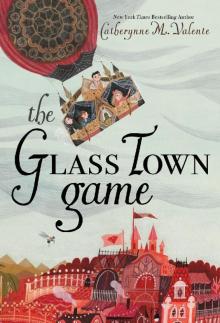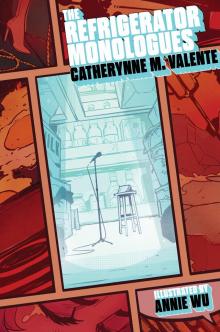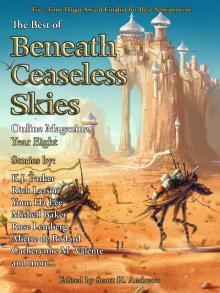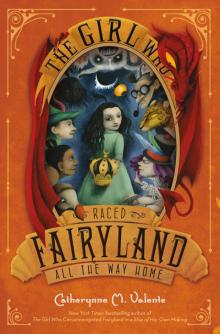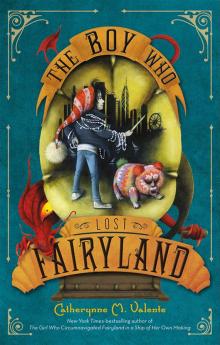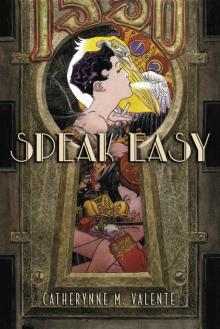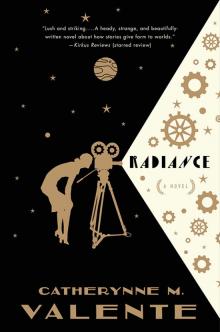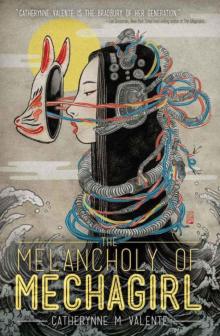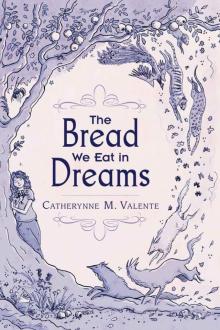


Inquisition, Page 7
Green, Toby
Chapter Two
SPREADING THE FIRES
. . . fearful of the punishment which for [his heresies] he deserved [he] determined to try to kill himself, without waiting for Justice to fulfil its legal obligations towards him . . .
Évora 1490–1545
IN 1474 A WHALE was beached and killed on the Portuguese coast near Setúbal, not far from Lisbon. The waxen monster from the deep had been attacking and devouring fishermen along the coast. As it lay inert upon the sands, a Portuguese rabbi announced that this was the Leviathan of the Old Testament, and that the Messiah was at hand.1 Just as in Spain, this was a time of omens; the great struggle was near.
Yet the cataclysm stayed away. Even as the inquisitorial flames licked the quemaderos of Seville, Ciudad Real and Zaragoza, in Portugal everything was normal. The old king, Afonso V, died in 1481; John II replaced him, and in 1490 John’s own son, Crown Prince Affonso, was betrothed to Princess Isabella of Spain. The pattern of alliance, advancement and mutual self-interest continued.
The city of Évora, less than forty miles from Portugal’s border with Spain, was chosen to celebrate the royal wedding of Affonso and Isabella. In the days before the Spanish princess’s arrival, there was dancing in the palaces. Parties spilled out of noble houses in the crooked streets beneath the Roman aqueduct. Mummers staged farces. Culture revealed its animalism at the bullfights. As the royal chronicler Rui de Pina put it, ‘the general excitement really made it seem as if the earth was shaking’.2
On 27 November 1490 Princess Isabella entered Évora. All the African slaves had been expelled from the city for ten days for her arrival, and John II had ordered the most beautiful young girls from the area to be brought in. Local farmers and stockmen brought cows and goats from their pastures, pigs with their piglets and cows with their calves. Five squares in the town were set aside for provisions so that no one would go hungry. The king built a banqueting hall of wood for the occasion. The windows of town houses were filled with boughs from orange and laurel trees and with jewels and tapestries.3
So much colour! Muslims were ordered to come from every Moorish community in the country; the best dancers, singers and musicians were demanded, and John II paid for them to have fine clothes and financed their journey. As Princess Isabella entered the town she was greeted by the Moors and the large local Jewish population with farces, dancing and revelry. Soon the farces filled the town. In one pageant John II himself appeared at the head of a great fleet of ships ‘portrayed on cloths painted with wild waves, accompanied by an awesome roar of artillery and trumpets and kettledrums, with tremendous shouts and the racket of whistles, and beside him were shipmasters, pilots and sailors dressed in brocade and silk . . . and the awnings of the ships were made of brocade, the sails of white and violet taffeta, the cordage of gold and silk’.4 In Portugal in 1490, theatricality did not yet imply the autos-da-fé.
As in any masquerade, John II had chosen the image which best characterized his identity. He depicted himself at the helm of a country changing by the month because of its maritime exploits – those exploits which were as terrifying as the noise that accompanied him, but grand and beautiful in their own way. The farces performed by the Jews and Muslims of Évora were also highly symbolic and in keeping with the traditions of court celebrations of the period. But these were among the very last such farces which would be performed in Portugal. Soon such raucous inter-cultural festivities would be decisively in the past. Intolerance was spreading from one part of Iberia to another.
The Inquisition did not move at once from Spain to Portugal. Some fifty-eight years separated the Inquisition’s formation in Spain in 1478 and its Portuguese establishment in 1536. But attitudes and fears moved with greater vim and what had been let out could not so easily be contained. Almost sixty years later, as the converso Álvaro de Leão festered in the cells of the Inquisition in Évora, he must have wondered what sort of future it was that the world had sleepwalked into; the freedom and spontaneity of the celebrations that had graced that city in 1490 were crumbling husks of memory buried under a sediment of fear.
ON 10 JANUARY 1545 the prosecutor of the Holy Office of the Inquisition in Évora put forward his case against Álvaro de Leão. Leão was a merchant, born in the frontier town of Mogadouro in north-eastern Portugal near the lush green forests alongside the Douro river. Leão came from a large family of five brothers and one sister; over the course of the next fifty years, the dealings of these people, their children and their grandchildren would encapsulate much of the global history of the Inquisition.
The prosecutor laid out his case with care. Leão, who was around thirty years old, lived in the desolate hills between Mogadouro and the nearby town of Cortiços. It was in Cortiços, the prosecutor alleged, that he ‘was seen to keep the law of Moses and its ceremonies, keeping the Jewish fasts by not eating on them until stars could be seen, and giving alms to conversos in the Jewish manner, as tzedakah’. Álvaro de Leão prayed like a Jew. He gathered with other conversos in a sort of synagogue, keeping the Jewish sabbath, lighting candles on Friday nights and refusing to work on Saturdays. Leão was arrested with his wife Lianor de Carvajal on suspicion of Judaizing and they were both remanded in the inquisitorial prison of Evora.5
Álvaro denied it all. He worked on Saturdays just as he did during the week, going to local markets and selling his goods. He was known as a good Christian who always went to hear mass on Sundays and holy days, paying for masses to be said throughout the year. He had been baptized at the age of eight days just like the Old Christians were. He was a devoted Christian, and there was no reason to doubt his good faith.6
The prosecutor was not convinced. Prisoners often claimed innocence on their arrest; they had to be worn down. The prosecutor was used to a battle of wills; he had learnt to enjoy the struggle to impose his own over the defendants. In Mogadouro and Cortiços, he alleged, it was public knowledge that Leão had committed these crimes. He had refused to pay for the curtains and large sacramental candles for the altar, and even if it was true that ‘he kept the Sundays and feasts of the Church it was also true that [Leão] kept and keeps the Jewish rites and ceremonies’.7
And then, abruptly, the case was shelved. Leão was sent back to the inquisitorial jail to ponder his crimes and consider repentance. He was to spend more than three years there before his case was resolved.
Leão could have been forgiven for thinking that there was some sort of vendetta against him and his family. His brother Jorge was also in the inquisitorial jail in Évora, along with Jorge’s wife Branca. Like Álvaro, Jorge and Branca lived in Cortiços and Jorge was a trader there – the brothers had been arrested together on the same day.8 Meanwhile, one of Álvaro and Jorge’s maternal uncles, Bernardo López, had also been arrested by the Inquisition and was in the same prison.9 A spell had been cast on these families which it would take centuries to break.
This case was typical of events in Portugal. In the 1480s many conversos fleeing the Spanish Inquisition had gone to Portugal, and when the Spanish Jews had been expelled by Ferdinand and Isabella in 1492 the majority had gone to Portugal as well – the ‘easy option’.10 These refugees had settled in towns such as Mogadouro, within spitting distance of the Spanish frontier, where they lived in uneasy coexistence with their neighbours and were blamed for the arrival of plagues which afflicted Portugal in every year between 1477 and 1496.11
The converso refugees often intermarried to an almost unhealthy degree. Thus Álvaro’s sister Catalina was married to Gaspar de Carvajal,12 who was himself related to Álvaro’s own wife Lianor. Both the Carvajal and Leão families were from Mogadouro, and had strong connections to the parts of Spain just across the frontier, which were likely to have been their original stamping ground before the exodus in 1492.13
These outsiders were easy targets for a country attempting to come to terms with its own power. Portugal was then a nouveau riche among the nations of Europe. The conquest of Goa and the exploration of
the African coast from Senegal to Kongo had given this, the final sliver of Europe before the Atlantic, control of the spice trade to Europe from Asia and of the slave and gold trade to Europe from Africa. Manoel I, John II’s successor, had been called ‘the fortunate’; John II was known as the ‘golden king’.14 Not everyone was as complimentary, however; Francis I of France, in a foretaste of Napoleon’s dismissal of the English as a ‘nation of shopkeepers’, had described Manoel I as ‘the grocer king’.15
Unprecedented amounts of money poured into Portugal. Under John II gold from Mina – located in modern Ghana – supplied almost half of the country’s entire monetary wealth.16 With money abundant as never before, the royal court soon became a monster. After Manoel I’s death in 1521 the new king John III journeyed up and down the country with a huge train of retainers who wrought havoc wherever they stopped. Among the layabouts who masqueraded as courtiers, gambling and robbery were rife. These fidalgos trailed large numbers of servants in their wakes who all demanded sustenance and provisions. Food, horses and carts were stolen. Orchards and woods were laid waste as a sort of entertainment. The fidalgos had so many retainers that there was a chronic shortage of farm labour in the countryside. Fields lay fallow – razing others to the ground did not help matters.17
Such casual excess was typical of a society which had recently experienced an unprecedented concentration of power. In order to convince oneself that the trappings of success were not mere chimeras, such power had to be wielded in full view of others. This inevitably meant that those less fortunate than the new oligarchy had to suffer. Unlike Spain, Portugal did not have a large Muslim population which could be conquered and subdued, since the Portuguese reconquest had been completed by the middle of the 13th century and the Muslim population easily assimilated.18 The power would therefore have to be directed elsewhere and fortunately, with the mass immigration of conversos and Jews from Spain in the 1480s and in 1492, there was an obvious alternative.
Incarcerated in the inquisitorial jail of Évora, Á lvaro de Leão could not, of course, see how his own plight mirrored that of others in Spain and elsewhere, and indeed said something about the spending of power which characterizes aspects of the human experience. What he could do, however, was feel hatred and despair. In January 1546, a year after his first arrest and interrogation, he tried to commit suicide by stabbing himself in the belly button, making a hole four fingers wide. The inquisitorial authorities had little sympathy. Leão, they said, ‘fearful of the punishment which for [his heresies] he deserved determined to try to kill himself, without waiting for Justice to fulfil its legal obligations towards him’.19 Amid the seething religious atmosphere of Portugal at the time, there cannot have been many people who would have awaited these ‘legal obligations’ if they could have taken matters into their own hands instead. Nonetheless, it was frustrating when prisoners did not wait for the Inquisition to give them the punishment which they deserved.
Lisbon 1497–1506
MANOEL I came to the throne in 1495 aged 26. His predecessor John II had died from an outbreak of plague which had also carried off eight nearer claimants than Manoel, and thus many saw his kingship as preordained. Who if not a chosen one could become king in such circumstances? His birth itself was supposed to have been a miracle, with his mother Dona Beatriz racked by labour for several days until a religious procession passed the doors of her house and raised the host – the boy was born at once.20
Manoel was a well-built man with a round head distinguished by a prominent forehead. He had chestnut hair, greenish, mirthful eyes and a melodious voice. Music was perhaps his greatest love, and with Portugal’s new wealth he brought singers and musicians from all over Europe to his court. Manoel lunched and dined to musical performances on Sundays and feast days, listening to cornets, harps and tambourines, and to moriscos playing lutes. Following Vasco da Gama’s discovery of the route to India during his epic voyage of 1497–9, Manoel had five elephants brought back to his kingdom, which went before him whenever he rode through Lisbon, preceded by a rhinoceros.21
Manoel’s injection of the exotic was a reflection of the country which he inherited in 1495. Lisbon at this time was one of the most cosmopolitan cities in Europe. The size of London or Cologne, it was thronged with foreigners attracted by the new trading routes.22 Men and women freely shared one another’s beds and played cards until dawn. People rode horses with very short stirrups, in the morisco style, and some saddles were made of silver or gold.23 As well as the bustling port and the busy streets running off it, there were olive groves within the city walls until 1500.24 The city’s centrepiece was the Rossio, a large irregular square fringed by hills on two sides and running down towards the banks of the Tejo river; it was by the Rossio that the offices of the Inquisition would be established.
In Lisbon it was obvious that the Portuguese had no intrinsic aversion to the foreign. But just as the country was opening up to influences from outside, there was an inner sense of a need for national definition. Groups, as most people have learnt from their own experience of friendships and professional networks, gain their shape in large part not only from deciding who is to be included, but also from deciding who is to be excluded.25 As foreign traders and products were being welcomed into the country and the number of African slaves grew, those perceived outsiders already in the country fell under closer scrutiny. This inevitably turned attention towards the Jewish and converso population.
At first, Manoel acted charitably towards the Jewish refugees who had arrived from Spain in 1492. Where John II had enslaved many of them after they had failed to depart within one year of being granted sanctuary, one of Manoel’s first acts was to free the Jewish slaves. However in 1496 he sought the hand of Isabella, the same daughter of the Reyes Católicos who had been married in such lavish circumstances to John II’s son Affonso at Évora.*1Affonso had died shortly after the wedding and Isabella was now a widow. It was Isabella herself who imposed the condition that she would only agree to the marriage if Manoel expelled all the Jews from Portugal.
Manoel made his decision. On 5 December 1496 he issued a decree giving Jews until the following October to leave Portugal. At first this seemed compassionate in comparison to the expulsion from Spain, where the Jews had been given only four months to leave and had been unable to take money or jewels with them. Yet things in Portugal were to turn out differently. Manoel was worried; by some estimates the Jews comprised 10 per cent of his population.26 Since he could not afford to lose them, he decided to prevent them from leaving in the first place.
In April 1497, during Lent, Manoel ordered the forcible baptism of Jewish children under the age of fourteen. These children were to be taken from their parents, sent to live elsewhere and educated in the Christian faith at the king’s expense. Many of the Old Christians were moved at the plight of the Jews ‘and themselves took the Jewish children into their houses so as not to see them swept up by other hands, and saved them’.27 Where their children could not be saved, ‘huge groans were raised, and the air filled with the lamentations and sobs of the women’.28
At last here was a form of cataclysm, but not that imagined by the rabbi who saw the whale on the beach at Setúbal. Some of the Jews drowned their own children rather than see them taken from them. Others committed suicide. Life, good order, law; all had been turned on their heads.
In the end, 20,000 Jews made their way to Lisbon, the only port in the whole country from which Manoel permitted them to depart (they could not of course cross Portugal’s land border into Spain). Here the king imprisoned them. The deadline expired. The vast majority of the Jews were baptized and thus kept in the country, though a few did manage to leave for North Africa.29 Manoel gave his own newly created conversos an amnesty of twenty years. During this period there would be no Inquisition and they could learn the Catholic faith. Their only consolation was that many of these poor souls had their children returned to them.30
The forced conversion of the Jews
of Portugal was widely seen in Christendom as a travesty of Catholic doctrine. Traditional Catholic theology rejected such forced conversions and urged that people should be brought to the faith through teaching and persuasion. Even one of Manoel’s chroniclers described the act as ‘unjust and iniquitous’,31 and the hypocrisy of the justification of the conversions is summed up by the fact that, according to Manoel’s own ordinances, no African slave could be converted without his consent if over ten years old.32
In these circumstances one could not expect the Catholicism of people like the parents and grandparents of Álvaro de Leão to be anything other than insincere. It was natural that they would attempt to maintain their cultural and religious identity. And yet, within forty years, the Portuguese Inquisition would declare this a heresy; having created a phenomenon, the Portuguese crown would set about persecuting it.
BY 1506 EVERYONE IN PORTUGAL was aware of the way in which the Spanish Inquisition dealt with converso heretics. Everyone, moreover, was aware that the conversos in Portugal were mostly simulating their Christianity. The plague still afflicted Portugal, and someone needed to be blamed. The atmosphere was ripe for a popular auto, sanctioned only by prejudice.
That year, in one of the chapels of the city’s Dominican monastery a strange light was seen on one of the crucifixes. Some took it as a miracle. Others were not so sure, and one converso, whose common sense was overcome by his honesty, declared that it looked more like a lit candle put next to the image of Christ. Overhearing this, some parishioners grabbed the man by the hair and dragged him into the street, where he was beaten, kicked and then burnt in the Rossio before a large mob.



